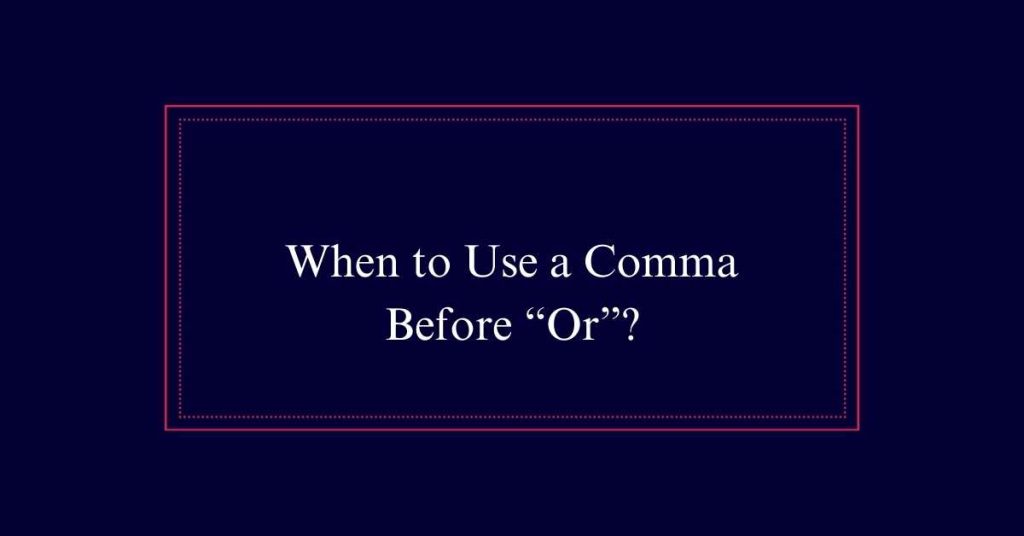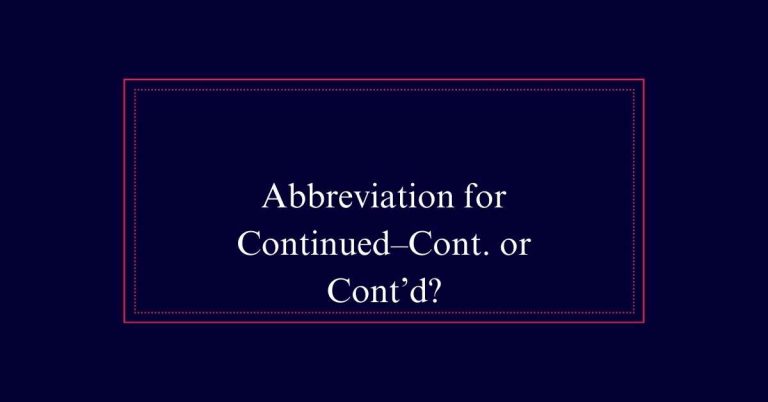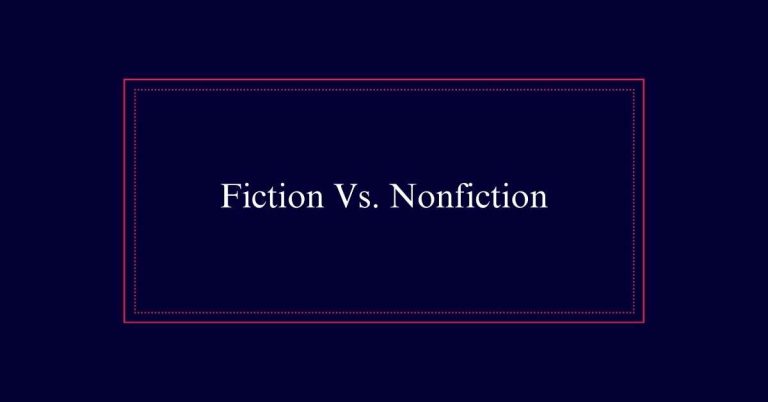When to Use a Comma Before “Or”?
Use a comma before “or” when it separates two independent clauses—complete thoughts with their own subject and verb. For example, “We could go to the museum, or we could visit the park.” Omit the comma if the clause following “or” lacks a subject and verb, such as in “Bring your jacket or wear a sweater.” The use of the Oxford comma, a comma before “or” in a list, is more about style and clarity.
Commas in Lists
Using commas in lists is essential for clarity and readability in writing. When listing three or more items, a comma should separate each element to avoid confusion.
For example, in the list ‘apples, oranges, and bananas,’ commas make each item distinct. This rule applies to both short and long lists. Consistent use of commas in lists helps readers understand the structure and meaning of the sentence. It is particularly important in complex lists where clarity is crucial.
While the use of the Oxford comma is debated, its primary function is to add clarity. American English often favors the Oxford comma, whereas British English typically omits it. Regardless, consistency in comma usage is key to effective communication.
The Oxford Comma Debate
The Oxford comma debate centers on whether or not to include a comma before the conjunction in a list of three or more items. Proponents argue that this comma, also known as the serial comma, adds clarity and prevents ambiguity. For example, in the list ‘bread, butter, and jam,’ the Oxford comma makes it clear that butter and jam are separate items.
Opponents believe the comma is unnecessary and can clutter writing. They argue that context usually provides enough clarity. While style guides differ, consistency in usage is key. The Oxford University Press famously supports the comma, emphasizing its role in clear communication.
Ultimately, the choice to use the Oxford comma is a stylistic decision.
American Vs. British Usage
American and British English differ in their approach to using the Oxford comma. In American English, the Oxford comma is often used in lists for clarity. For example, ‘apples, oranges, and bananas.’ Many American style guides recommend its use to prevent confusion.
On the other hand, British English tends to omit the Oxford comma unless its absence would create ambiguity. For instance, ‘apples, oranges and bananas’ is more common in British usage. The Oxford University Press, however, endorses the Oxford comma regardless of regional preference.
The key is consistency. Writers should choose one style and stick to it throughout their work to guarantee clarity and coherence for their readers.
Independent Clauses With or
While understanding regional preferences for the Oxford comma is important, it is equally essential to know when to use a comma before ‘or’ in independent clauses.
An independent clause can stand alone as a complete sentence. When ‘or’ connects two such clauses, a comma is necessary for clarity. For example, ‘We can go to the museum, or we can visit the park.’ Here, each clause has its own subject and verb, making the comma before ‘or’ crucial. Without the comma, the sentence could become confusing.
Conversely, if the clause following ‘or’ lacks a subject and verb, the comma is omitted. Proper comma placement guarantees clear, readable sentences, enhancing the overall quality of writing.
When to Skip the Comma
Skip the comma before ‘or’ when the following clause does not have its own subject and verb. This rule helps maintain clarity and flow in writing.
For example, in the sentence ‘You can have tea or coffee,’ no comma is needed because ‘coffee’ lacks a subject and verb.
Here are key points to remember:
- No subject/verb: Skip the comma if the clause after ‘or’ lacks a complete subject and verb.
- Short sentences: Shorter, simpler sentences usually don’t need a comma before ‘or.’
- Consistent style: Maintain consistency throughout your writing to avoid confusion.
- Natural flow: Skipping the comma can help the sentence read more naturally.
Understanding these guidelines ensures clear and effective writing.
Enhancing Readability
In addition to knowing when to skip the comma before ‘or’, understanding effective comma usage is key to enhancing readability in writing.
Proper comma placement helps separate ideas and improves the flow of sentences. When commas are used correctly, they help readers understand the structure and meaning of a sentence more easily.

For example, in a list, using commas helps to clearly delineate each item, preventing confusion. Similarly, placing a comma before ‘or’ in independent clauses guarantees that each clause stands out, making the text smoother to read.
Ultimately, clear and concise writing benefits greatly from appropriate comma usage, aiding readers in grasping the intended message without unnecessary effort.
Consistency in Comma Usage
Consistency in comma usage is essential for maintaining clarity and coherence in writing. When using commas before ‘or,’ it is important to apply rules consistently throughout a document.
Here are four key points to keep in mind:
- Independent Clauses: Use a comma before ‘or’ when it separates two independent clauses.
- Lists: In a series of three or more items, a comma before ‘or’ can enhance clarity.
- Oxford Comma: Decide whether to use the Oxford comma and apply it consistently.
- Stylistic Choices: Consistent usage, whether with or without the Oxford comma, is vital.
Clarity in Writing
Effective comma usage is essential for achieving clarity in writing. Placing a comma before ‘or’ can greatly enhance the readability of a sentence. This is especially true when ‘or’ introduces an independent clause.
In such cases, the comma helps to clearly separate distinct ideas. Without it, sentences can become confusing. For example, ‘You can choose the blue shirt, or you can pick the red one’ is clearer than ‘You can choose the blue shirt or you can pick the red one.’
Proper comma placement guarantees that each part of the sentence is easily understood. Therefore, mastering when to use a comma before ‘or’ is a key skill for clear and effective writing.
Importance of Proper Commas
Mastering proper comma usage is fundamental for achieving clarity and coherence in writing. Commas play an essential role in separating ideas, enhancing readability, and preventing misunderstandings. Their correct use guarantees that the reader can easily follow the writer’s intended meaning.
Key reasons for using commas correctly include:
- Clarity: Commas help to clarify the meaning of sentences by separating clauses and elements within lists.
- Readability: Proper comma placement improves the flow of text and makes it easier to read.
- Consistency: Consistent comma usage aids in maintaining a uniform style throughout the writing.
- Structure: Commas help to organize complex sentences and ensure logical structuring.
Grammar Rules for Commas
Understanding the fundamental grammar rules for comma usage is essential for clear and effective writing. Commas help separate ideas, making sentences easier to read.
Use a comma in a series of three or more items, such as in lists. The Oxford comma, placed before the last ‘or’ in a list, is debated. It adds clarity, especially in longer lists. In American English, the Oxford comma is common, while British English tends to omit it. Consistency in using or not using the Oxford comma is vital.
Additionally, place a comma before ‘or’ when it begins an independent clause. This helps to clearly separate complete thoughts, enhancing readability and coherence in your writing.
Frequently Asked Questions
What Are Some Common Mistakes With Comma Usage Before “Or”?
Common mistakes with comma usage before ‘or’ include omitting the comma before an independent clause, adding a comma when unnecessary, and inconsistent use of the Oxford comma in lists. Consistency and clarity are essential for proper comma usage.
Does Using a Comma Before “Or” Affect Sentence Length?
Using a comma before ‘or’ does not greatly impact sentence length. Its primary function is to enhance clarity, especially when separating independent clauses or items in a list, thereby improving overall readability and comprehension.
How Do Different Writing Styles Influence Comma Usage Before “Or”?
Writing styles influence comma usage before ‘or’ to a great extent. Formal writing often uses the Oxford comma for clarity, while informal writing may omit it. Consistency in applying these rules enhances readability and prevents ambiguity.
Can Incorrect Comma Usage Before “Or” Change Sentence Meaning?
Incorrect comma usage before ‘or’ can indeed change a sentence’s meaning. A misplaced comma might separate ideas improperly, leading to confusion. Proper comma placement guarantees clarity and maintains the intended meaning of the sentence.
Are There Exceptions to Using a Comma Before “Or”?
Yes, exceptions exist. A comma is not needed before “or” when it does not begin an independent clause or when listing two items. Consistency and clarity in comma usage should always guide your decision.






